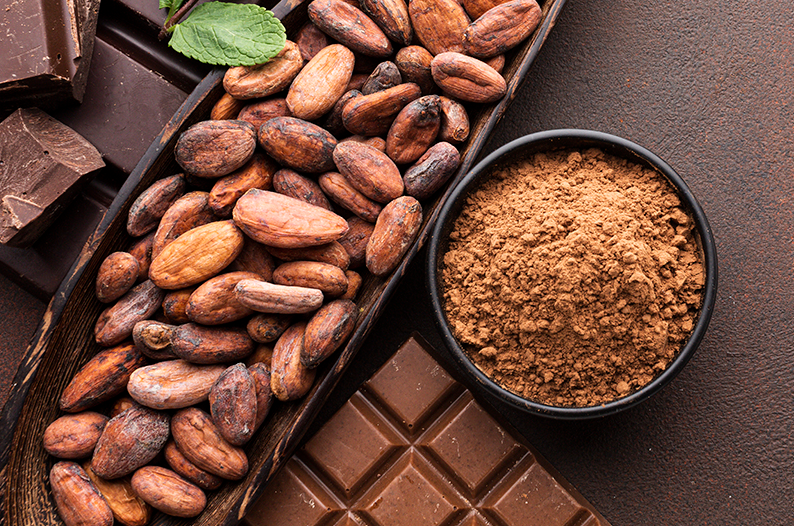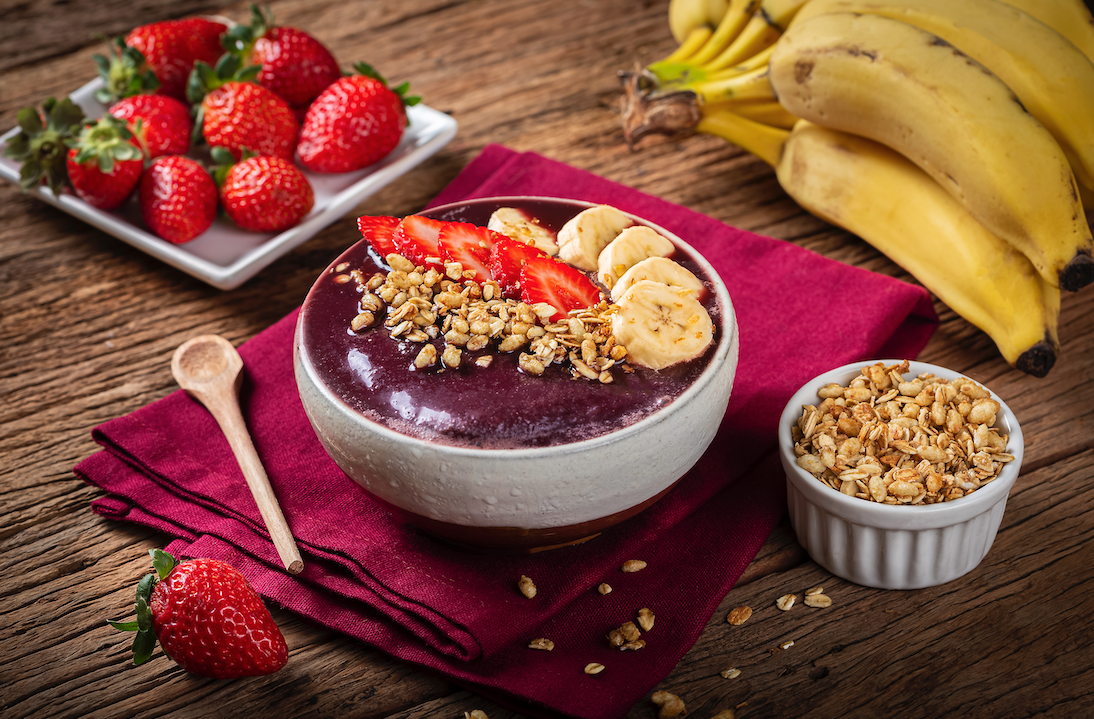
Cocoa
Cocoa is one of the most commercialized tropical plants. It’s what give chocolate its delicious taste, smooth texture and it’s good for brain, heart and entire cardiovascular system.
It’s also called 'food of the gods'.
Usage
Inflammation
Cocoa is rich in polyphenols that are naturally occurring antioxidants.
Cardiovascular system
It has the power to dilate blood vessels and establish better circulation.
Good for Brain
Flavanol compounds found in raw cocoa improve attention, working memory, and general cognition.

How to add cocoa to your diet?
Dark chocolate
This chocolate treat is powerful source of antioxidants.
As a Supplement
Available in liquid extracts, capsules, and powders.
Cocoa Drink
Add the cocoa powder in warm glass of milk or water.
The tree, Theobroma cacao, can grow up to ten meters in height.
The flowers are mostly white or slightly pink, small, and delicate.
The fruit that produces cocoa is not small.
The fruit is quite large and weighs an average of half a kilogram.
Ancient Herbal Therapy
Medicinal uses suggest that native people possessed a great understanding of their natural resources.
Cacao had been recognized for stimulatory effects and was used to treat fatigue. In addition, the high cocoa butter content of the seeds aided in weight gain for people suffering from different disorders.
Moreover, the use of cacao decoctions in the Dominican Republic to treat weakness can be attributed to either its stimulant properties, its energy-rich properties, or, more likely, both factors combined. Cacao is a home remedy for anything, from cracked lips and coughs to irritations of the scalp. Chemical composition does not include a high content of emollients, but it is rich in anti-inflammatory compounds.
About
The name is derived from the Greek for "food of the gods". As a wild plant, it is an indigenous species of tropical rainforests of Central and South America and one of the most commercialized tropical plants.
Europe first received this plant from Christopher Columbus in 1502. He brought it from his seafaring adventures in newly discovered America. The people of that time made a specific drink from cocoa, similar to today's liqueurs. According to some hypotheses, cocoa originates from the humid tropical areas of today's southeastern part of Mexico, from where it spread south to the Amazon.
Composition
According to other scientific findings, the process of spreading the growth of cocoa went in the opposite direction. The latest analyzes based on DNA research lists the three borders of Brazil, Colombia, and Peru as an autochthonous area of cocoa, from where, thanks to people, it has spread to other tropical areas of Pan-America.
In modern times, cocoa is increasingly used in phytopharmacy as a transmitter in some compounds or as an auxiliary medicinal agent.
Science
Cocoa is considered being one of the most nutritious foods in the world, especially raw cocoa beans. Thanks to its very rich composition, cocoa has a wide range of indications and health properties. Above all, it has an active role because it protects the body from the effects of free radicals. Due to the presence of theobroma, it affects a good mood and reduces stress.
It has a preventive effect on the cardiovascular system because it has the power to dilate blood vessels and establish better circulation. Cocoa is an excellent source of iron. Experiments done in recent times show that cocoa stimulates concentration and has a positive effect on all cognitive functions.
Additionally, it contains nutrients that have a preventive effect on the heart muscle, relaxing it and thus on the occurrence of myocardial infarction. The most common nutrients in cocoa are magnesium, iron, chromium, magnesium, zinc, endorphins, and theobromine
Safety
Cacao nibs are generally safe to consume, in moderation. Their content includes stimulants, caffeine, and theobromine, which are in fact beneficial but can cause side effects when overconsumed.
Eating raw cacao is potentially dangerous. Theobromine poisoning has reportedly caused heart failure, seizures, and kidney damage due to dehydration. Eating 50 to 100 g of cacao daily could lead to excessive sweating, trembling, and headaches.
Fun Facts
December 13th is National Cocoa Day.
About
Aprotosoaie, A. C., Miron, A., Trifan, A., Luca, V. S., & Costache, I. I. (2016). The cardiovascular effects of cocoa polyphenols—an overview. Diseases, 4(4), 39.
Bunn, C., Lundy, M., Läderach, P., & Castro, F. (2017). Global climate change impacts on cocoa. Lima, Peru.
Cooper, K. A., Donovan, J. L., Waterhouse, A. L., & Williamson, G. (2008). Cocoa and health: a decade of research. British Journal of Nutrition, 99(1), 1-11.



